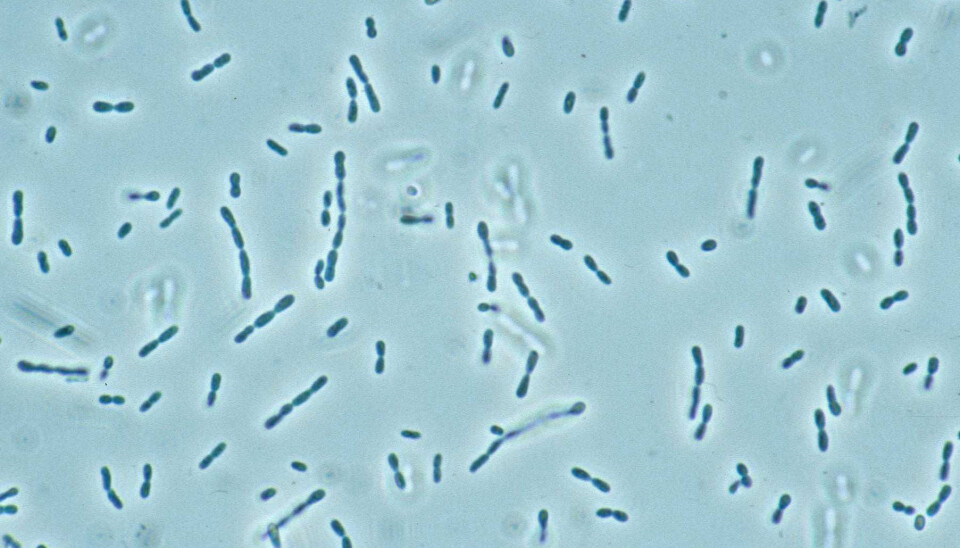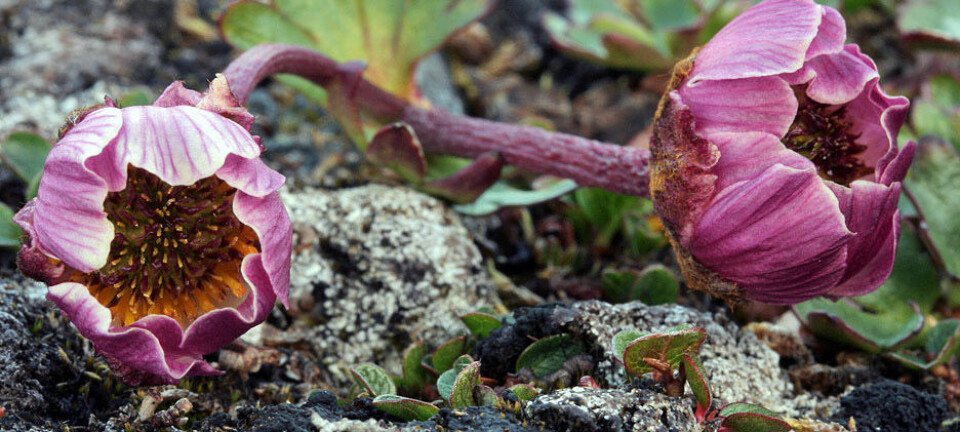An article from University of Tromsø – The Arctic University of Norway

Bacteria that eat greenhouse gases
Biologists have found a special bacterium in the wetlands of an Arctic archipelago that gobbles up the worst greenhouse gas of them all: methane.
Denne artikkelen er over ti år gammel og kan inneholde utdatert informasjon.
To say that the bacterium Methylobakter tundripaludum consumes methane is a little bit of an understatement.
These bacteria live in the top layer of Svalbard's wetland soils and filter the methane gas that is formed in the soil and released from permafrost when it melts.
A bacterium is a simple, single-cell organism, but it's also a small factory.
“Methylobakter tundripaludum uses methane to build new cell material and to produce energy. The rest is converted into CO2," says biology professor Mette Svenning.
Areas underlain by permafrost are a storehouse of organic carbon − 50 percent of the Earth's carbon is stored here, in just 20 percent of the Earth's land area.
According to Svenning because the permafrost is at a low temperature and the season when bacterial flora can be active is short, the turnover of plants and animals is very slow.
This means that organic material such as dead plant matter is broken down very slowly via anaerobic bacterial processes. This is the source of the methane production.
If the climate warms and the permafrost thaws, this process will be reinforced and the carbon will be released in the form of methane (CH4), which is a greenhouse gas that is 20 times more potent than CO2.
Adapted to the Arctic
Bacteria that feed on methane are also found in landfills, in rice paddies and in soil.
But Methylobakter tundripaludum appears to be particularly suited to Arctic conditions. This bacterium is also found in some places in Siberia and Alaska.
"Some may argue that Svalbard is not representative of the Arctic environment because it is an isolated archipelago," says Svenning. “But these bacteria are also found elsewhere in the Arctic, which shows that what happens in Svalbard enables us to draw conclusions about much larger areas.”
Now this bacteria is being analysed at the Joint Genome Institute in the USA to sequence its genes. This will enable it to be compared to other bacteria and will also supply more information about the Arctic organism itself.
This analysis may help to identify features that are not known yet. But the scientists know it has a function in nature and that it is very active in this ecosystem.
“But it belongs to an ecosystem that we basically do not know much about, so sequencing the genes may reveal some secrets to us," Svenning says.
Higher temperatures increase methane consumption
The question is, can these bacteria help to reduce methane emissions that result from global warming?
Methylobakter tundripaludum lives in extreme conditions, and can withstand harsh environmental changes.
For example, the optimal temperature for this bacterium is 23° C. This means that they grow best and are most active between 20 and 30 degrees.
But the bacteria also grow even if the temperature drops to zero degrees. If it continues to warm, then the permafrost will continue to thaw and methane production will increase significantly.
“It is possible to speculate that the consumption of methane will also increase if these bacteria become more active due to higher temperatures," says Svenning.
On the other hand, according to her, if the warming thaws the permafrost and rainfall increases, there may be higher water levels in wetlands. That would result in a situation that would be much worse for these bacteria because they require air, they are aerobic.
“If they are drowned, this will result in anaerobic conditions where they cannot function as they should. That means more methane will be released to the atmosphere," says Svenning.
Mapping microbial communities
It is not easy to understand all of the relationships in complex ecosystems, especially when you do not even have an overview of the role that the smallest organisms play.
There are many microorganisms that have yet to be discovered, or whose function in the community is still unknown.
"We have a 'bank' of bacteria that we know is found in the soil in Svalbard's wetlands. Currently we are examining the entire microbial community found in these wetlands to better understand the turnover of organic carbon and methane production in the Arctic climate," says Svenning.
One of her co-workers is Alexander Tveit, a PhD candidate with extensive experience in conducting biological surveys. He uses an advanced molecular technique called pyrosequencing.
Pyrosequencing is a method which makes it possible to look at the entire biological community, as opposed to experimenting with individual bacteria, which has been the most common approach to date.
“This is a much faster way to identify unknown bacterial activity. You can also use this approach to describe the kinds of organisms in the soil," Tveit says.
Complex analysis for climate answers
"We take samples from several wetlands on Svalbard, and in each wetland, we have several sampling points" says Svenning.
“Samples from these points are mixed together so that you have a representative sample of bacteria for the wetlands. We are mainly interested in the top 30-40 centimetres of the soil.”
Researchers mix the soil with various chemicals, which is then centrifuged and processed in several steps, after which the DNA can be separated out.
If this DNA is analysed, it is possible to determine how much of the various active bacterial types are found in the soil.
According to Tveit, this information is analysed using databases from all over the world, against which we can compare these genes. About half of all of the sequences get a 'hit' in the database.
“We can then see the codes from the hits for a specific function, such as breaking down methane," he says.
This kind of comparison doesn't allow researchers to say much about individual bacteria, but it does enable them to say approximately how many bacteria there are in the soil sample that have the specific characteristic for which the gene sequence codes.
The scientists’ goal is to identify as much as possible, but much will remain unknown.
“Even with a couple of hundred thousand of these sequences, we still won't get enough good hits. And soil is very difficult to work with, because many biological and chemical processes take place there," concludes Tveit.
External links
- Mette Marianne Svenning's profile at UiT
- Alexander Tøsdal Tveit's profile at UiT
- Norwegian Institute for Nature Research (NINA) website

































